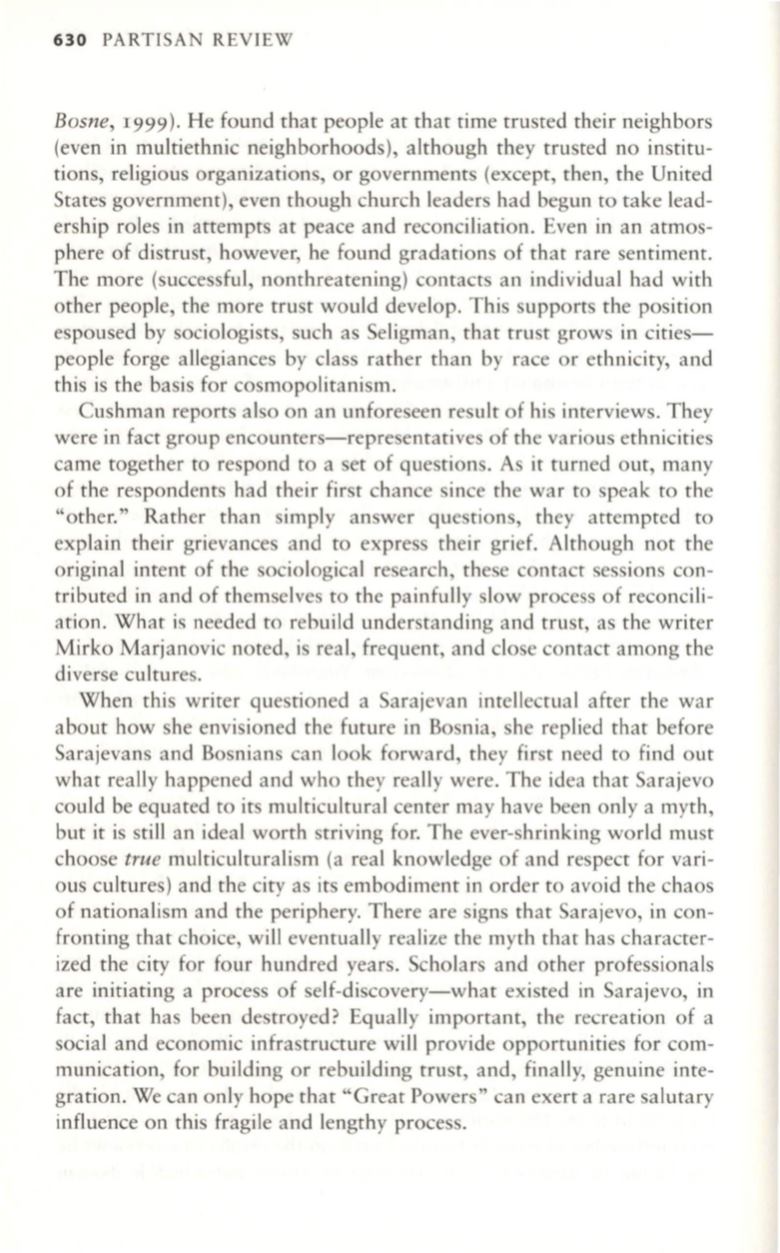
630
PARTISAN REVIEW
Bosne,
1999).
He found that people at that time trusted their neighbors
(even in multi ethnic neighborhoods), although they trusted no institu–
tions, religious organizations, or governments (except, then, the United
States government), even though church leaders had begun to take lead–
ership roles in attempts at peace and reconciliation . Even in an atmos–
phere of distrust, however, he found gradations of that rare sentiment.
The more (successful, nonthreatening) contacts an individual had with
other people, the more trust would develop. This supports the position
espoused by sociologists, such as Seligman, that trust grows in cities–
people forge allegiances by class rather than by race or ethnicity, and
this is the basis for cosmopolitanism.
Cushman reports also on an unforeseen result of his interviews. They
were in fact group encounters-representatives of the various ethnicities
came together
to
respond to a set of questions. As it turned out, many
of the respondents had their first chance since the war to speak to the
"other." Rather than simply answer questions, they attempted to
explain their grievances and
to
express their grief. Although not the
original intent of the sociological research, these contact sessions con–
tributed in and of themselves to the painfully slow process of reconcili–
ation. What is needed to rebuild understanding and trust, as the writer
Mirko Marjanovic noted, is real, frequent, and close contact among the
diverse cultures.
When this writer questioned a Sarajevan intellectual after the war
about how she envisioned the future in Bosnia, she replied that before
Sarajevans and Bosnians can look forward, they first need to find out
what really happened and who they really were. The idea that Sarajevo
could be equated to its multicultural center may have been only a myth,
but it is still an ideal worth striving for. The ever-shrinking world must
choose
true
multiculturalism (a real knowledge of and respect for vari–
ous cultures) and the city as its embodiment in order
to
avoid the chaos
of nationalism and the periphery. There are signs that Sarajevo, in con–
fronting that choice, will eventually realize the myth that has character–
ized the city for four hundred years. Scholars and other professionals
are initiating a process of self-discovery-what existed in Sarajevo, in
fact, that has been destroyed? Equally important, the recreation of a
social and economic infrastructure will provide opportunities for com–
munication, for building or rebuilding trust, and, finally, genuine inte–
gration. We can only hope that "Great Powers" can exert a rare salutary
influence on this fragile and lengthy process.


